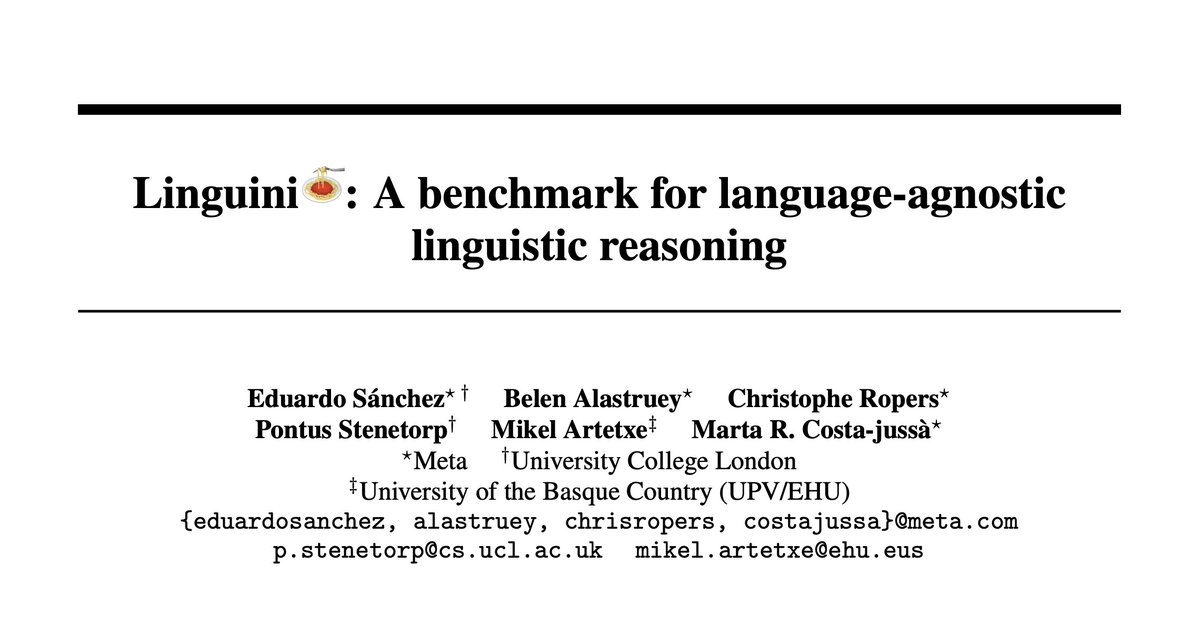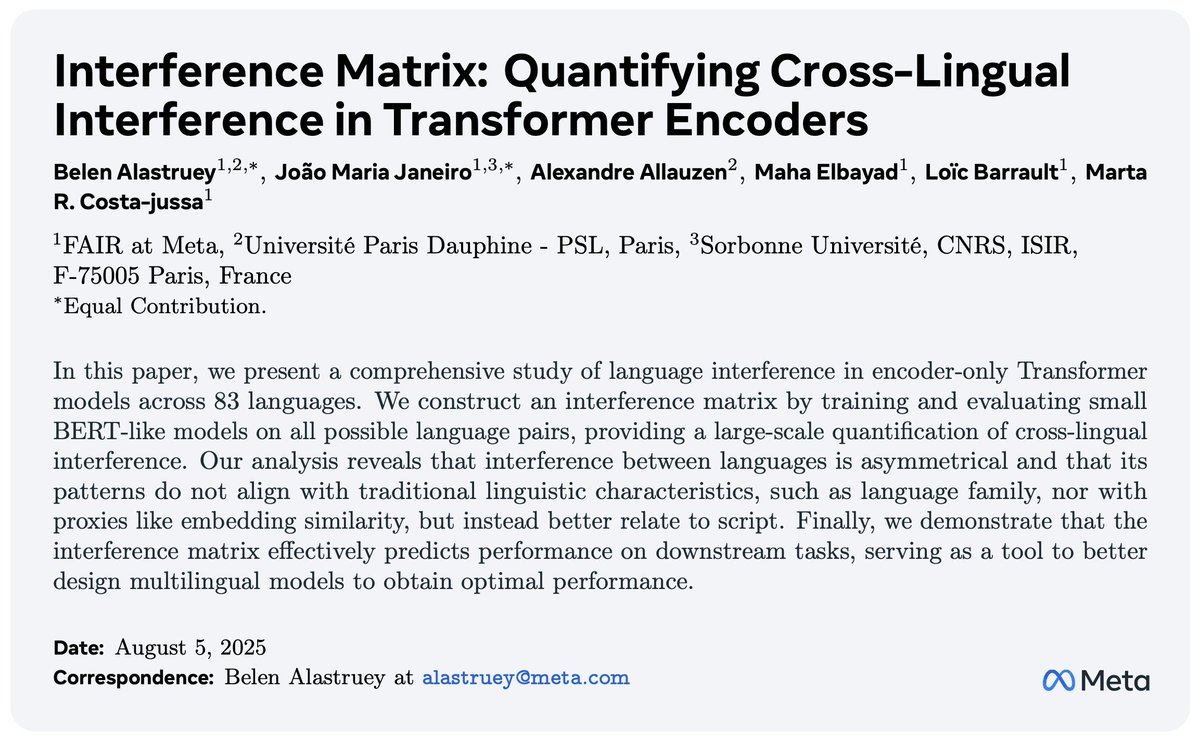
Eduardo Sánchez
@eduardosg_ai
Followers
216
Following
267
Media
30
Statuses
48
Research Scientist at @Meta. PhD Student at @ucl_nlp. Formerly MSc AI at @UM_DACS & BSc CS at @MatCom_UH. Working on Low-Resource MT and linguistic reasoning.
London/Paris
Joined May 2022
🚨NEW BENCHMARK🚨. Are LLMs good at linguistic reasoning if we minimize the chance of prior language memorization?. We introduce Linguini🍝, a benchmark for linguistic reasoning in which SOTA models perform below 25%. w/ @b_alastruey, @artetxem, @costajussamarta et al. 🧵(1/n)
3
23
117
Some interesting work quantifying the curse of multilinguality! Congrats, @b_alastruey and @JoaoMJaneiro!.
🚀New paper alert! 🚀. In our work @AIatMeta we dive into the struggles of mixing languages in largely multilingual Transformer encoders and use the analysis as a tool to better design multilingual models to obtain optimal performance. 📄: 🧵(1/n)
0
0
2
Linguini is available on GitHub ( and on Huggingface (. You can read our paper here 👉 and BBEH's paper here 👉 Happy saturating! 🍝.
github.com
Linguini is a benchmark to measure a language model’s linguistic reasoning skills without relying on pre-existing language-specific knowledge, based on the International Linguistic Olympiad problem...
0
0
1
RT @javifer_96: New ICLR 2025 (Oral) paper🚨. Do LLMs know what they don’t know?.We observed internal mechanisms suggesting models recognize….
0
44
0
RT @AIatMeta: New research from Meta FAIR: Large Concept Models (LCM) is a fundamentally different paradigm for language modeling that deco….
0
558
0
Happy to share our team's work on the Large Concept Model, an alternative to token-based LLMs that operates in a multilingual embedding space, unlocking zero-shot generalization and outperforming similarly sized SOTA LLMs for several languages in various summarization tasks.
Wrapping up the year and coinciding with #NeurIPS2024, today at Meta FAIR we’re releasing a collection of nine new open source AI research artifacts across our work in developing agents, robustness & safety and new architectures. More in the video from @jpineau1. All of this
1
1
13
RT @b_alastruey: 🚨New #EMNLP Main paper🚨. What is the impact of ASR pretraining in Direct Speech Translation models?🤔. In our work we use….
0
4
0
To build a benchmark of linguistic challenges in languages LLMs are unlikely to have seen before, we extracted problems from the @IOLing_official, a contest where participants must solve linguistic puzzles in (mostly) extremely low-resource languages. 🧵(2/n)
1
1
5


















